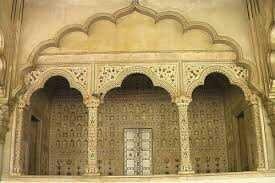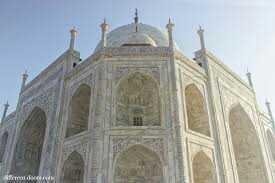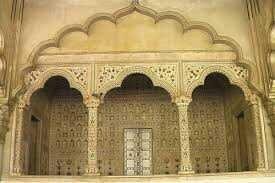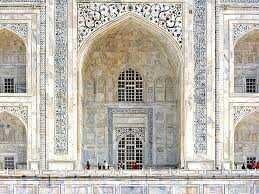Islamic or muslim architecture

The Taj Mahal in Agra, India, is considered one of the best gifts of Islamic art and architecture
to the world. However, the building is only a mausoleum and a monument that has been built extravagantly.
As such, it is at odds with a number of fundamental teachings and values of Islam.
Many people wonder what authentic Islamic architecture and its scope are, and whether it is appropriate to classify such a miracle as Islamic, Muslim or something else, architecture. A lot has been written and said about the subject, but scientists and researchers differ enormously. It is an endless, but at the same time fascinating, debate.

Islamic architecture is an architecture that illustrates Islamic teachings and values in an architectural process rather than in an architectural product. An architectural process starts with having a good understanding and vision that leads to making a correct intention. It goes on with the planning, design and construction phases and ends with the achievement of the net results and how people use it and benefit from it. Islamic architecture is a fine mix of all these phases and elements that are interwoven with the threads of the belief system, teachings, teachings and values of Islam. What makes an architecture Islamic is its metaphysical, spiritual and ethical dimension, rather than its pure physical and perceptible aspects, in relation to all parties involved in the process: patrons, architects, engineers and ordinary users, and the implications of their various conceptual aspects. and practical relations with architecture.

This does not mean, however, that the physical side of Islamic architecture is unimportant. On the contrary, it is important, but remains subservient to the metaphysical, spiritual and ethical factors. Reducing the globe from architecture to its purely artistic, technological or technical aspects, and selecting architects and architectural engineers as the only protagonists therein, significantly reduces architecture and renounces some of its most dynamic dimensions. By saying this, it is not the intention to lose or take away any credit from someone who deserves it, especially architects. Islamic architecture should of course not be regarded as an elitist enterprise. It is both a scientific and an epistemological aim aimed at the welfare of all Muslims. Islamic architecture must be practical in the sense that it is affordable, accessible, functional and must address the problems and problems of all Muslims. It may also be non-discriminatory, impractical and utopian.

If you study only the material side of Islamic architecture, you must ultimately claim that it has little or no religious content and that the Quran and Sunnah, which are the original sources of Islamic revealed knowledge, do not contain any doctrine of the arts. Their role is limited to a few characteristics, such as the prohibition on the representation of people, the houses of the Prophet, his pulpit (minbar) and the requirements regarding the form of the ritual prayer in the organization of the mosque. Islamic architecture would thus simply be "a complex synthesis of different legacies and also cultural and political explanations". To call such a one-dimensional architectural legacy Islamic, in the sense that it embodies and represents Islam as a world view, the Shari'ah (law) and a way of life, would be grossly inappropriate. Therefore, it is often suggested that the use of the term Islamic to qualify the architecture of the Islamic world after the rise of Islam should be suspended "until more effective research is conducted".

This nevertheless represents a series of fairly sensible disputes, provided that the same is observed against the background of the fundamental epistemological premisses that inexorably lead to the making of such judgments. Architecture, however, is more than pure art, science and technology, just as Islam is much more than just slogans, symbols, forms and simple rituals. Thus seen as a physical locus of lifestyles that are inspired, guided and even dictated by the total message of Islam, which is not only intended to facilitate and proclaim such lifestyles, but also to integrate itself into and an integral part to become Islamic architecture suddenly becomes a different and much more complex and profound proposition. As a process and total framework intended for facilitating and implementing Islam, Islamic architecture is in fact both a quintessence and an unmistakable manife.
best post
You just planted 0.51 tree(s)!
Thanks to @eviarahi
We have planted already 3562.51 trees
out of 1,000,000
Let's save and restore Abongphen Highland Forest
in Cameroonian village Kedjom-Keku!
Plant trees with @treeplanter and get paid for it!
My Steem Power = 20765.69
Thanks a lot!
@martin.mikes coordinator of @kedjom-keku